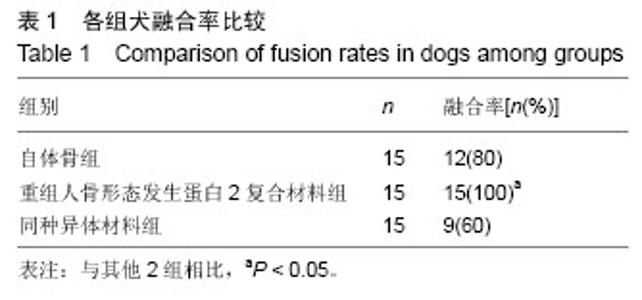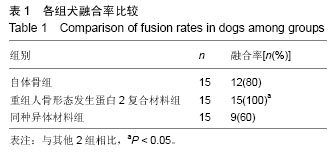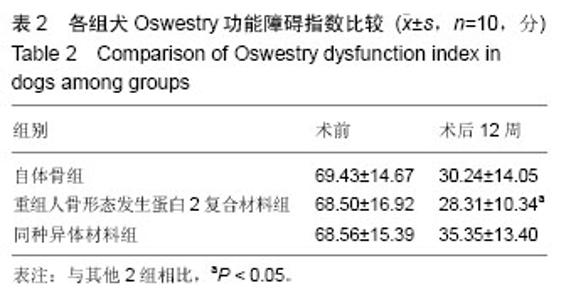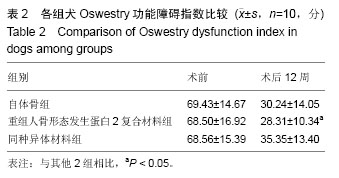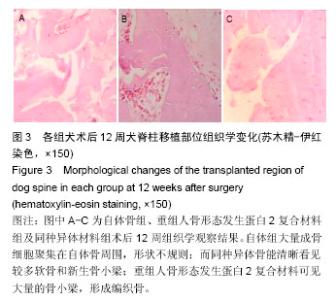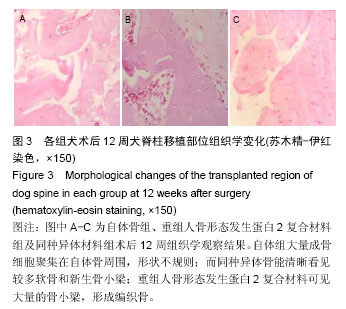| [1] |
Xu Feng, Kang Hui, Wei Tanjun, Xi Jintao.
Biomechanical analysis of different fixation methods of pedicle screws for thoracolumbar fracture
[J]. Chinese Journal of Tissue Engineering Research, 2021, 25(9): 1313-1317.
|
| [2] |
Lu Dezhi, Mei Zhao, Li Xianglei, Wang Caiping, Sun Xin, Wang Xiaowen, Wang Jinwu.
Digital design and effect evaluation of three-dimensional printing scoliosis orthosis
[J]. Chinese Journal of Tissue Engineering Research, 2021, 25(9): 1329-1334.
|
| [3] |
Zhang Tongtong, Wang Zhonghua, Wen Jie, Song Yuxin, Liu Lin.
Application of three-dimensional printing model in surgical resection and reconstruction of cervical tumor
[J]. Chinese Journal of Tissue Engineering Research, 2021, 25(9): 1335-1339.
|
| [4] |
Yao Rubin, Wang Shiyong, Yang Kaishun.
Minimally invasive transforaminal lumbar interbody fusion for treatment of single-segment lumbar spinal stenosis improves lumbar-pelvic balance
[J]. Chinese Journal of Tissue Engineering Research, 2021, 25(9): 1387-1392.
|
| [5] |
Wang Haiying, Lü Bing, Li Hui, Wang Shunyi.
Posterior lumbar interbody fusion for degenerative lumbar spondylolisthesis: prediction of functional prognosis of patients based on spinopelvic parameters
[J]. Chinese Journal of Tissue Engineering Research, 2021, 25(9): 1393-1397.
|
| [6] |
Chen Xinmin, Li Wenbiao, Xiong Kaikai, Xiong Xiaoyan, Zheng Liqin, Li Musheng, Zheng Yongze, Lin Ziling.
Type A3.3 femoral intertrochanteric fracture with augmented proximal femoral nail anti-rotation in the elderly: finite element analysis of the optimal amount of bone cement
[J]. Chinese Journal of Tissue Engineering Research, 2021, 25(9): 1404-1409.
|
| [7] |
Zhou Jihui, Li Xinzhi, Zhou You, Huang Wei, Chen Wenyao.
Multiple problems in the selection of implants for patellar fracture
[J]. Chinese Journal of Tissue Engineering Research, 2021, 25(9): 1440-1445.
|
| [8] |
Chen Jinping, Li Kui, Chen Qian, Guo Haoran, Zhang Yingbo, Wei Peng.
Meta-analysis of the efficacy and safety of tranexamic acid in open spinal surgery
[J]. Chinese Journal of Tissue Engineering Research, 2021, 25(9): 1458-1464.
|
| [9] |
Zeng Yanhua, Hao Yanlei.
In vitro culture and purification of Schwann cells: a systematic review
[J]. Chinese Journal of Tissue Engineering Research, 2021, 25(7): 1135-1141.
|
| [10] |
Xu Yulin, Shen Shi, Zhuo Naiqiang, Yang Huilin, Yang Chao, Li Yang, Zhao Heng, Zhao Lu.
Biomechanical comparison of three different plate fixation methods for acetabular posterior column fractures in standing and sitting positions
[J]. Chinese Journal of Tissue Engineering Research, 2021, 25(6): 826-830.
|
| [11] |
Cai Qunbin, Zou Xia, Hu Jiantao, Chen Xinmin, Zheng Liqin, Huang Peizhen, Lin Ziling, Jiang Ziwei.
Relationship between tip-apex distance and stability of intertrochanteric femoral fractures with proximal femoral anti-rotation nail: a finite element analysis
[J]. Chinese Journal of Tissue Engineering Research, 2021, 25(6): 831-836.
|
| [12] |
Zhang Wei, Hu Jiang, Tang Liuyi, Wan Lun, Yu Yang, Lin Shu, Tang Zhi, Wang Fei.
Advantages of robot assisted percutaneous biopsy in the diagnosis of spinal lesions
[J]. Chinese Journal of Tissue Engineering Research, 2021, 25(6): 844-848.
|
| [13] |
He Li, Tian Wei, Xu Song, Zhao Xiaoyu, Miao Jun, Jia Jian.
Factors influencing the efficacy of lumbopelvic internal fixation in the treatment of traumatic spinopelvic dissociation
[J]. Chinese Journal of Tissue Engineering Research, 2021, 25(6): 884-889.
|
| [14] |
Song Chengjie, Chang Hengrui, Shi Mingxin, Meng Xianzhong.
Research progress in biomechanical stability of lateral lumbar interbody fusion
[J]. Chinese Journal of Tissue Engineering Research, 2021, 25(6): 923-928.
|
| [15] |
Xie Chongxin, Zhang Lei.
Comparison of knee degeneration after anterior cruciate ligament reconstruction with or without remnant preservation
[J]. Chinese Journal of Tissue Engineering Research, 2021, 25(5): 735-740.
|
